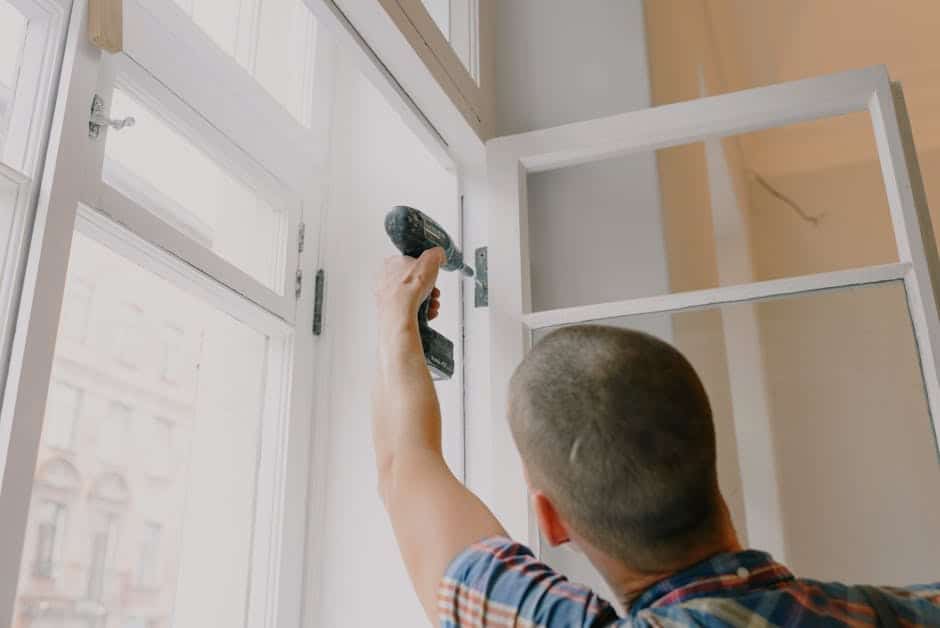Basement Window Replacement: Top 5 Expert Tips for 2024
The Importance of Proper Basement Window Replacement
Looking to replace your basement window efficiently and effectively? Here’s a quick answer to get you started:
- Identify the type of window (casement, hopper, sliding).
- Measure accurately to ensure a proper fit.
- Choose materials that resist rust and rot, like reinforced vinyl.
- Consider professional installation for better sealing and insulation.
Replacing your basement window may seem daunting, but it’s crucial for maintaining a dry, healthy home. In the Middlesex County area, old and neglected basement windows can become rusty or rot, leading to bigger issues like heat loss and water damage. Enter EverLast™ basement windows from Basement Systems, designed with reinforced vinyl frames that are both maintenance-free and durable.
Why is basement window replacement so important? It involves more than just aesthetics; it impacts the comfort, safety, and energy efficiency of your home. Upgrading to high-quality, double-pane windows helps eliminate air leaks and improves insulation, making your basement a more comfortable living space.
I’m Tyler Tranni, owner and operator of Tranni Home Remodeling in Billerica, MA. With years of experience in basement window replacement, I understand the challenges and the solutions that ensure a perfect, long-lasting fit.

Understanding Basement Windows
When it comes to basement window replacement in Middlesex County, MA, understanding the different types of windows and their functions is crucial. Here, we’ll dive into the types of basement windows, egress windows, and standard sizes to help you make an informed decision.
Types of Basement Windows
Basement windows come in various styles, each with its own advantages. The most common types include:
- Awning Windows: These windows hinge at the top and open outward, making them great for ventilation even during rain. They are ideal for basements with limited above-ground wall space.
- Casement Windows: Side-hinged and crank-operated, these windows open like a door, providing excellent ventilation and energy efficiency. They are a popular choice for new constructions but can also be used in replacements.
- Hopper Windows: Hinging at the bottom and opening inward, hopper windows are perfect for small spaces. They are commonly used in basements and bathrooms for ventilation.
- Sliding Windows: These windows have sashes that slide horizontally. They are easy to operate and can be sized large enough to meet egress requirements.
Egress Windows
Egress windows are essential for safety and are often required by building codes if you’re converting your basement into a living space. These windows must:
- Have an opening of at least 5.7 square feet.
- Open easily without tools.
- Provide a clear path to the outside.
- Be no more than 44 inches from the floor.
Egress windows usually open into a well space with a ladder or steps leading to ground level. They ensure that your basement is up to code for bedrooms or other occupancy.
Standard Sizes
Standard sizes for basement windows vary depending on the type and function. Here are some common dimensions:
- Awning Windows: Typically range from 2 feet to 4 feet in width and 1.5 feet to 2.5 feet in height.
- Casement Windows: Usually available in sizes from 1.5 feet to 3 feet in width and 2 feet to 6 feet in height.
- Hopper Windows: Commonly found in sizes from 2 feet to 3 feet in width and 1 foot to 2 feet in height.
- Sliding Windows: Often range from 2 feet to 5 feet in width and 1.5 feet to 3 feet in height.
Understanding these sizes can help you choose the right window for your basement, ensuring proper fit and function.
Next up, we’ll explore how to choose the right basement window replacement, focusing on casement, hopper, and sliding windows, as well as their energy efficiency and ventilation benefits.
Choosing the Right Basement Window Replacement
When it comes to replacing basement windows, selecting the right type can make a big difference in energy efficiency, ventilation, and overall comfort. Let’s dive into the three main types of basement windows: casement, hopper, and sliding windows.
Casement Windows
Casement windows are a popular choice for basement window replacement due to their energy efficiency and ability to provide fresh air.
- Side-Hinged: These windows are hinged on the side and open outward like a door, allowing for maximum ventilation.
- Energy-Efficient: Casement windows compress into their frame when closed, creating a tight seal that keeps drafts out and helps maintain a consistent indoor temperature.
- Fresh Air: Because they open fully, casement windows let in a lot of fresh air, making them ideal for basements that need good airflow.
Hopper Windows
Hopper windows are another excellent option, especially for smaller spaces where ventilation is a priority.
- Bottom-Hinged: These windows are hinged at the bottom and open inward from the top, similar to an upside-down awning window.
- Good Ventilation: Hopper windows are great for letting in fresh air while keeping out rain and debris.
- Smaller Size: They are typically smaller than other window types, making them perfect for basements with limited wall space.
Sliding Windows
Sliding windows are known for their ease of use and good seal against the elements.
- Easy to Open: These windows slide horizontally, making them simple to open and close.
- Good Seal: Sliding windows provide a tight seal when closed, which helps with energy efficiency.
- Variety of Sizes: They come in a range of sizes, making it easy to find one that fits your basement window opening perfectly.
Choosing the right type of window can greatly improve the functionality and comfort of your basement. Next, we’ll discuss how to measure for replacement windows to ensure a perfect fit.
Measuring for Replacement Windows
Getting the correct window size is crucial for a successful basement window replacement. Accurate measurements ensure a perfect fit, which improves energy efficiency and security. Here’s a simple guide to help you measure your basement windows correctly.
Tools You’ll Need
- Tape measure
- Notepad and pen
- Computer and spreadsheet (optional)
Measuring Tips
- Check for Square: Before measuring, ensure your window frame is square. Measure diagonally from the inside of the lower left corner to the upper right corner, then from the lower right to the upper left. If the two measurements are within 1/4 inch of each other, your window is square.
- Measure the Width: Measure the width at three points—bottom, middle, and top. Place the tape measure inside the window opening and stretch it across to the opposite side. Write down each measurement and circle the smallest one. This is your rough width.
- Measure the Height: Measure the height at three points—left, middle, and right. Again, place the tape measure inside the window opening and stretch it to the top. Note each measurement and circle the smallest one. This is your rough height.
- Compile the Measurements: Subtract 1/4 inch from both the width and height measurements to account for installation space. For example, a 53-1/2 inch x 33 inch window opening will need a 53-1/4 inch x 32-3/4 inch replacement window.
Standard Sizes
In older homes, basement windows are often 12 to 24 inches high and 30 to 36 inches wide. Knowing these standard sizes can help when shopping for new windows. However, always measure each window individually, as sizes can vary due to shifting house frames or settling foundations.
By following these steps, you’ll ensure your new basement windows fit perfectly, enhancing both the look and function of your space.
Next, let’s dive into the installation process to understand what it takes to replace your basement windows efficiently.
Installation Process
Replacing a basement window might seem daunting, but with the right approach, it can be manageable. Let’s break down the steps and compare DIY versus professional installation.
Cutting Space
First, you need to prepare the space for your new window. This often involves cutting through concrete or brick. This is where things can get tricky.
DIY Tips:
– Use a concrete saw or reciprocating saw with a masonry blade.
– Wear safety gear to protect from dust and debris.
– Measure and mark the area to ensure a precise cut.
Professional Services:
– Pros have specialized tools and experience.
– They ensure the cut is clean and accurate.
– They manage debris and minimize damage to your home.
Framing the Opening
After cutting, the next step is to frame the opening. This provides structural support for the new window.
DIY Tips:
– Use pressure-treated lumber to resist moisture.
– Ensure the frame is level and square.
– Secure the frame with masonry screws or anchors.
Professional Services:
– Professionals guarantee the frame is perfectly aligned.
– They use high-quality materials for durability.
– They ensure the frame meets local building codes.
Installing the Window
Once the frame is ready, it’s time to install the window. This step involves placing the window into the frame and securing it.
DIY Tips:
– Apply a bead of silicone caulk around the frame for a watertight seal.
– Insert the window and use shims to level it.
– Secure the window with screws and check for any gaps.
Professional Services:
– Pros ensure a perfect fit and finish.
– They use advanced sealing techniques to prevent leaks.
– They provide a warranty on their work.
Labor Costs
Labor costs can vary widely depending on the complexity of the job and your location. In Middlesex County, MA, professional installation can range from $200 to $500 per window.
Cost Comparison
DIY Installation:
– Tools and materials: $100 – $300
– Time: Several hours to a full day per window
– Risk: Potential for errors, which can be costly to fix
Professional Installation:
– Cost: $200 – $500 per window
– Time: Typically completed in a few hours
– Benefit: Peace of mind and quality assurance
DIY vs. Professional Installation
DIY Installation:
– Pros: Lower cost, personal satisfaction
– Cons: Time-consuming, risk of mistakes, requires tools and skills
Professional Installation:
– Pros: Quick, high-quality work, warranty included
– Cons: Higher upfront cost
By considering these factors, you can decide whether to tackle the project yourself or hire a professional. Either way, understanding the process helps ensure your basement window replacement goes smoothly.
Cost of Basement Window Replacement
Replacing your basement windows can be a smart investment, but it’s important to understand the costs involved. Here’s a breakdown of what you can expect when budgeting for basement window replacement in Middlesex County, MA.
Average Costs
On average, replacing a basement window costs between $450 and $1,400 per window, including labor. Most homeowners will pay around $750 per window. This range accounts for various factors like window type, size, and material.
Labor Costs
Labor costs can make up about 15% of the total replacement cost, ranging from $100 to $400 per window. Professional installation ensures the job is done correctly and may include a warranty, providing peace of mind.
Material Costs
Different window materials come with different price tags. Here’s a quick comparison:
- Aluminum: $200 – $800 per window. Durable but less energy-efficient.
- Vinyl: $300 – $900 per window. Energy-efficient and low maintenance.
- Wood: $700 – $1,800 per window. Classic look but requires more upkeep.
- Composite: $600 – $1,500 per window. Durable and energy-efficient.
- Fiberglass: $700 – $1,400 per window. Highly insulating and weather-resistant.
Cost by Window Type and Size
The type and size of window you choose also impact the cost. Here are some common options:
- Casement Windows: $600 – $1,200 per window. Very energy-efficient.
- Hopper Windows: $200 – $700 per window. Ideal for ventilation.
- Sliding Windows: $250 – $1,800 per window. Easy to open and seal well.
Additional Considerations
- Egress Windows: These windows are required by building codes for basements with bedrooms. They cost between $700 and $4,000 due to their larger size and specific installation requirements.
- Energy Efficiency: Opting for double or triple-pane glass can increase upfront costs but save you money on energy bills in the long run.
Understanding these costs helps you plan your budget effectively for a successful basement window replacement. Next, we’ll discuss how to secure your new basement windows for added safety and peace of mind.
Securing Your Basement Windows
When it comes to basement window replacement, security is just as important as aesthetics and functionality. Here are some effective ways to secure your basement windows:
Stronger Glass
Tempered glass is a fantastic option for basement windows. It’s four times stronger than standard glass, making it much harder to break. This type of glass is not only a great deterrent for intruders but may also be required by building codes in some areas.
Automatic Locks
Automatic locks are a convenient and secure option. Certain windows come with locks that automatically engage when you close the window. This feature ensures that you never forget to lock your windows, adding an extra layer of security.
Window Opening Control Devices (WOCDs)
Window Opening Control Devices (WOCDs) are another excellent security feature. These devices allow you to open your window but limit the opening to less than 4 inches. This way, you can enjoy fresh air without compromising security. WOCDs can be built into new windows or added to existing ones.
By implementing these security measures, you can significantly improve the safety of your basement windows. In the next section, we’ll answer some frequently asked questions about basement window replacement.
Frequently Asked Questions about Basement Window Replacement
What is the most efficient basement window?
When it comes to energy efficiency, casement windows often take the top spot. These windows seal tightly against the frame when closed, preventing drafts and reducing energy loss. 100 Series Casement Windows made of Fibrex material are an excellent choice. Fibrex is virtually maintenance-free and resists rot and decay, making it perfect for basement conditions.
However, the most energy-efficient option is the picture window. Since picture windows are fixed and do not open, they provide a continuous seal, minimizing any air leakage. The A-Series Picture Window is particularly noteworthy for its triple-pane glass and weather-resistant frame, offering superior insulation.
Are basement windows standard sizes?
Yes, basement windows often come in standard sizes, making it easier to find replacements that fit existing openings. Common sizes for basement windows include:
- 32 x 19-1/4 inches
- 31-7/8 x 23-7/8 inches
- 47-1/2 x 23-1/2 inches
These sizes are typically available in casement, hopper, and sliding window styles. However, measure your window opening carefully before purchasing a replacement to ensure a proper fit.
What is the best type of window for a basement egress?
For an egress window, the main requirement is that it must provide a clear and safe exit in case of an emergency. Casement windows are often the best choice for this purpose because they open fully like a door, maximizing the opening space. According to the International Residential Code (IRC), egress windows must meet the following criteria:
- Minimum net clear opening area of 5.7 square feet
- Minimum net clear opening height of 24 inches
- Minimum net clear opening width of 20 inches
- Maximum sill height of 44 inches from the finished floor
Make sure to check local building codes in Middlesex County, MA, to ensure compliance.
By understanding these key aspects, you can make informed decisions about your basement window replacement. Up next, we’ll dive into the cost factors involved in replacing basement windows.
Conclusion
When it comes to basement window replacement, choosing the right contractor is crucial. At Tranni Home Remodeling, we pride ourselves on delivering high-quality craftsmanship and outstanding service to our clients in Middlesex County, MA.
Our team understands the unique challenges that come with basement window installations. Whether you need energy-efficient casement windows, secure hopper windows, or versatile sliding windows, we have the expertise to handle it all. We work closely with you to ensure that your new windows not only meet but exceed your expectations in terms of performance and aesthetics.
Our commitment to quality means using top-notch materials like Fibrex for 100 Series windows, which are virtually maintenance-free and resistant to rot and decay. We also offer options like the A-Series Picture Window with triple-pane glass for maximum energy efficiency.
Why choose us?
- Expert Craftsmanship: Our skilled technicians have years of experience in window installation, ensuring a perfect fit and finish every time.
- Outstanding Service: From the initial consultation to the final installation, we are dedicated to providing a seamless and stress-free experience.
- Local Knowledge: We are well-versed in the building codes and requirements specific to Middlesex County, MA, ensuring your project is compliant and safe.
Don’t leave the security and efficiency of your basement windows to chance. Trust Tranni Home Remodeling to deliver exceptional results that improve your home’s value and comfort.
Ready to get started? Contact us today for a free estimate and let us help you transform your basement with high-quality window replacements.






